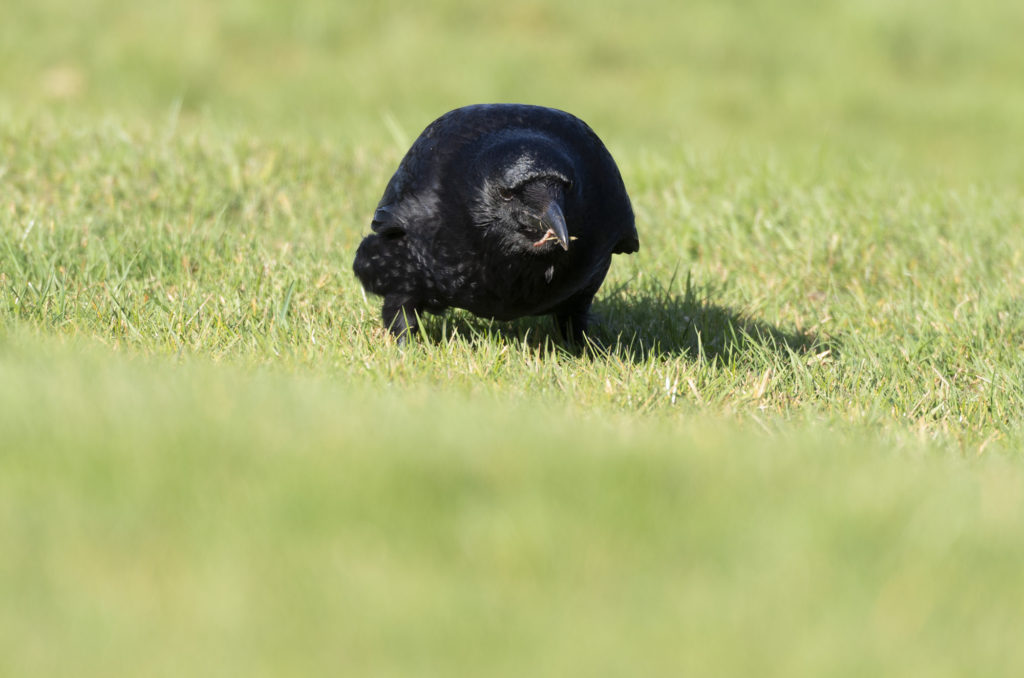According to the verse, carrion crows are great at social distancing: ‘A rook on its own is a crow. A crow in a crowd is a rook.’ The carrion crows that have been bouncing around the golf course we have been walking across during lockdown certainly fit with this, with us seeing them either in pairs or on their own as in this image. They are also becoming increasingly used to the people that are marching across their territory at all times of the day and evening without the metal sticks and the tartan plus fours that they are probably used to!
The saying I mention above is supposedly the easiest way for people to tell the difference between rooks and carrion crows, although I have to say that I’ve not always found carrion crows to be solitary creatures. When I lived in south London, my local patch for wildlife photography was Brockwell Park (yes, the same park that apparently epically failed on social distancing) and found that the crows there would often stay in much larger groups. I’m assuming the main reasons for this would be the high number of birds in a comparatively small amount of green space where the feeding is very good; these birds would always be seen supplementing their diet with chips, burgers and other food dropped by visitors to the park. I guess that the carrion crows of London find it as tricky to social distance as the people do. I would be interested to hear of others’ experiences of these highly-intelligent birds.
Back to my current local patch, the carrion crows, along with the jackdaws and magpies, that we see on our walks across the golf course seem to be feasting on the invertebrates that must be easy to find in the short grass on the manicured greens and fairways. I captured this behaviour in the image below. During the summer, insects and other invertebrates are their main prey, with the addition of scavenged food such as carrion during the breeding season.


